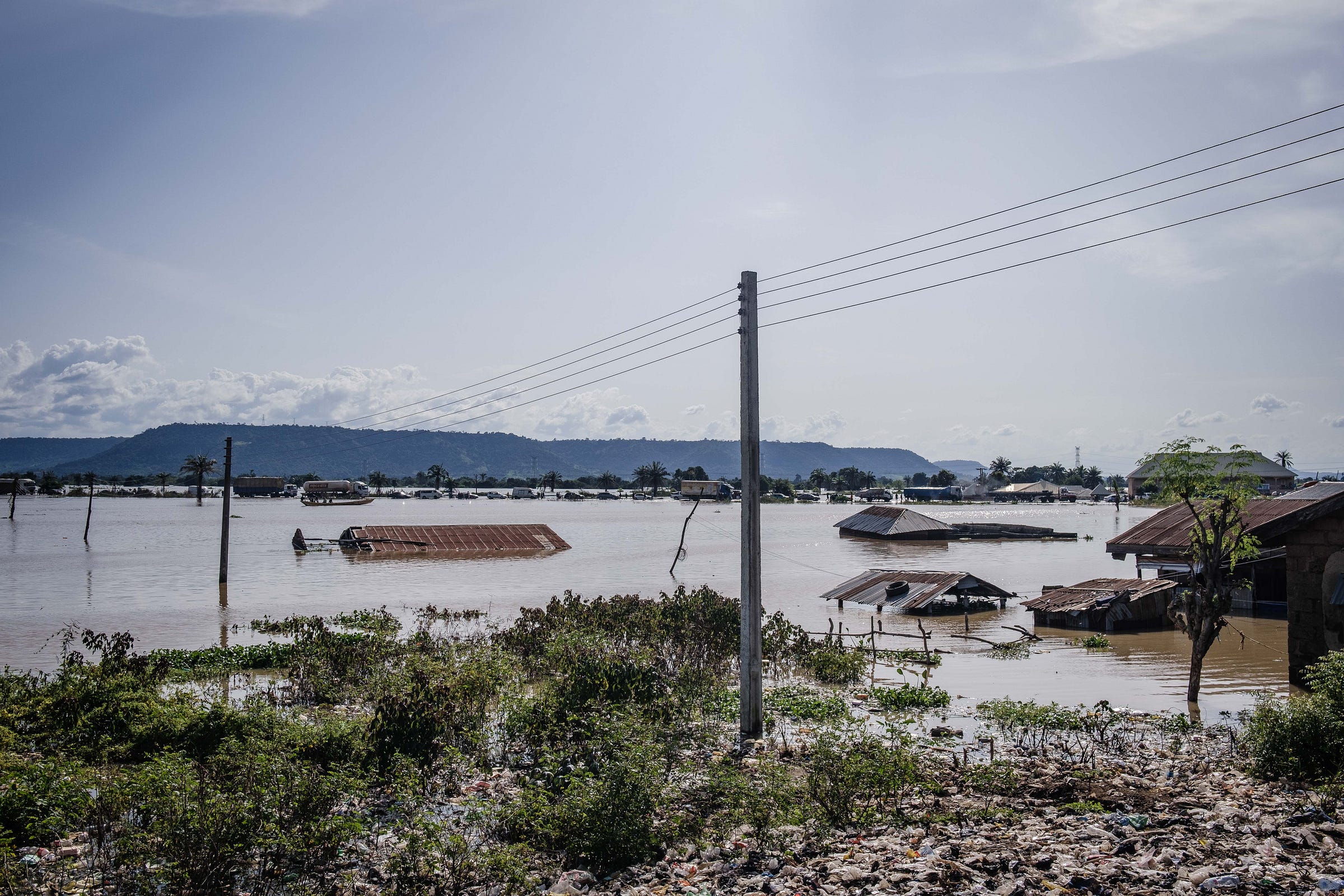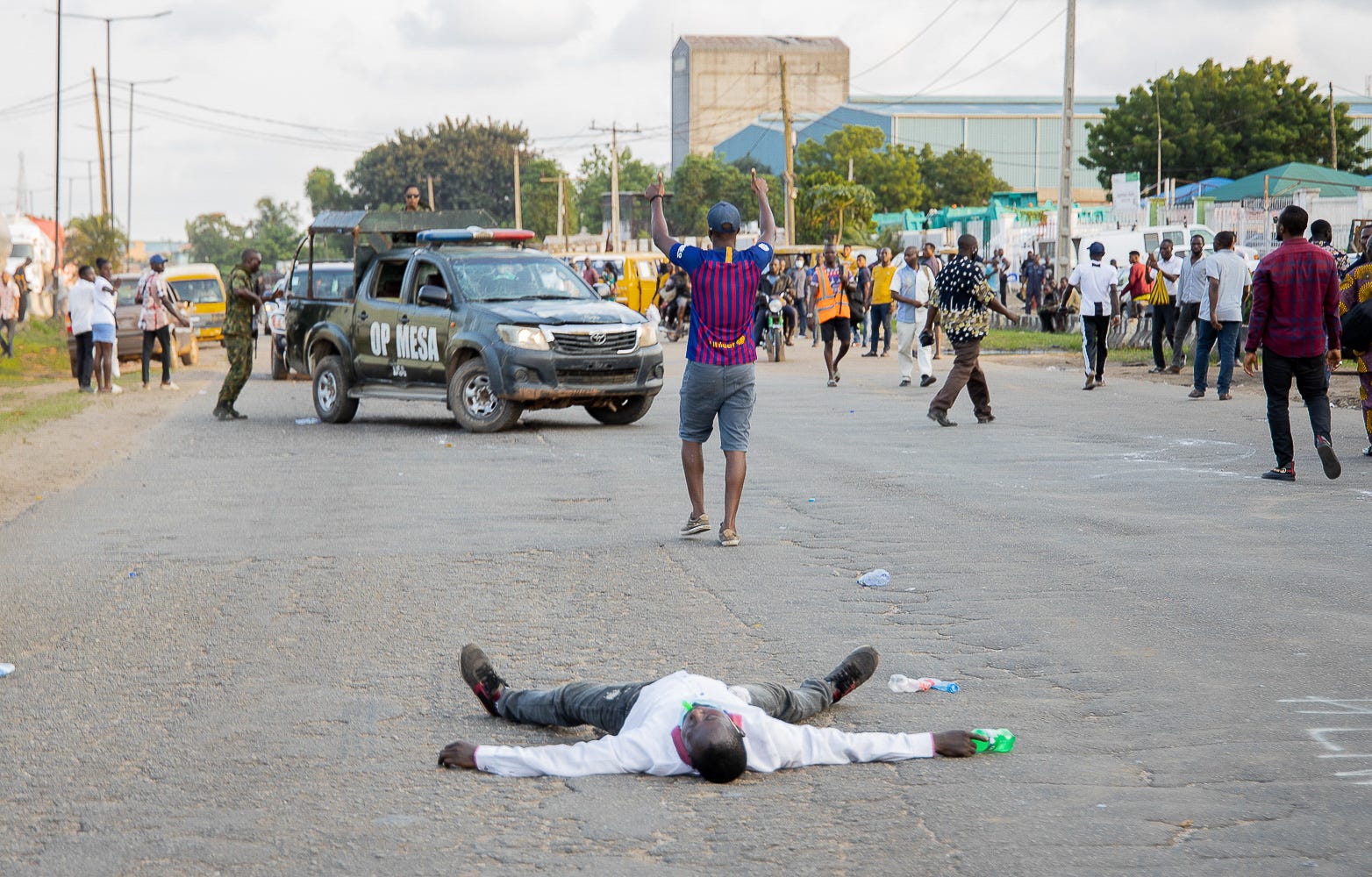Good Photographs Demand To Be Looked at Twice
Lidudumalingani on 3 photograph in the Tender Photo Archive
When I was in my adolescence, an old woman in the neighbouring village started telling incoherent and farfetched stories, and one of them was about people who lived under water. The men in her stories stood on the floor of the ocean and held all of the mass of the ocean water above their heads. Her stories had striking detail. Looking at the images of the flooding in this photograph, the naked men holding up the houses immediately comes to mind.
In this photograph by Taiwo Aina, the water appears to be holding up the houses, entire houses floating on the weight of water. The houses in the photograph are submerged in the water at varying degrees, as if somehow they are taking turns sinking, disappearing from view. Beyond one of the houses on the right of the photograph, a small volume of water glimmers, pulling the eye to its beauty. Half of the photograph is under water, hidden from camera, but we know it is there, we assume it is there.
The photograph needs to be looked at twice, first for aesthetics and second without. The first look conjures up the old woman and her men holding the entire water in the ocean. The second look conjures up all the devastation caused by the water, the houses destroyed in the water, mould forming where the memories of the house owners were neatly tucked away. All good photographs demand to be looked at twice.
The photograph reveals nothing about where and when it was taken, there are no noticeable landmarks, no placards to tell us if it is a protest, or not. The composition of the shot is wide and yet the edges are stretching the frame, demanding to add another layer to an already busy photograph. On the left edge of the frame, a man in a bright shirt exits the frame and on the right edge of the frame a man in a red shirt enters the frame. Each body in this frame appears to reveal something different, even contradictory to the next subject, contradictory to the next emotion. Take the man in the Barcelona jersey, with his hands in the air: both his thumbs saluting the military van in front of him, or not saluting at all, perhaps surrendering, or pleading his innocence, granting his coerced cooperation.
Another layer in the photograph is the man in the foreground. The eye goes to him first but he is elusive, and so then the eye quickly drifts elsewhere in the photograph, to search for meaning, or else clues to a meaning. There is no blood underneath the man, there is no sign of injury, his hand still clutches to the cold drink he was carrying, it all seems to be fine, except the way he is lying on the floor. If one took chalk, drew around the man, traced his body on the tar road, a sinister reality begins to form. If a photograph speaks a thousand words, this one, with unsettling ease, speaks three thousand more.
The following sentence might be a lie but the deceit is worth it. In a song, the North Carolina rapper Median raps “I move at a speed where I become a ghost to myself.” I am convinced the song exists but I cannot find it. In this photograph, four young girls move at a speed that they become a ghost to themselves, and the viewer. Each of them is caught mid-movement, their bright clothing blurring in the camera, indicating that they are moving fast. In this photograph, one can hear the chuckling of the children, and their excitement. There is a big hole on the ceiling of the classroom, another small hole above the window, there is chalk writings on the walk, the wall has a hole. Off frame, one can imagine other ways the school is in ruins, but in this photograph—in this single moment of these young girls playing—nothing else matters, only their happiness.
1–3: Photographs by Taiwo Aina, Omorogie Osakpolor, and Rahima Gambo
Support Tender Photo
This is the #9 edition of Correspondences, a pop-up series on Tender Photo, published every Saturday from March 4–May 20, 2023. I asked a few writers to find “correspondences” between 3 photographs from the archive, chosen without constraint on style or genre, and to write short commentaries on their choice. The goal is to open up Tender Photo’s editorial and curatorial process to an engaged group of readers, broadening the diversity of responses to the varied work featured so far.
Tender Photo is a bi-weekly newsletter on African photography, published Wednesdays and Saturdays. See the archive for more features on early to mid-career photographers. If this newsletter was shared with you, consider subscribing, or forward to a friend. Please whitelist the newsletter to ensure you never miss it.






A kind of parallel thrill in the three. For me the third one goes some further documentary
Love the photo of the girls in motion. I am strongly reminded of the painting 'Dance' by Henri Matisse. A very similar energy.